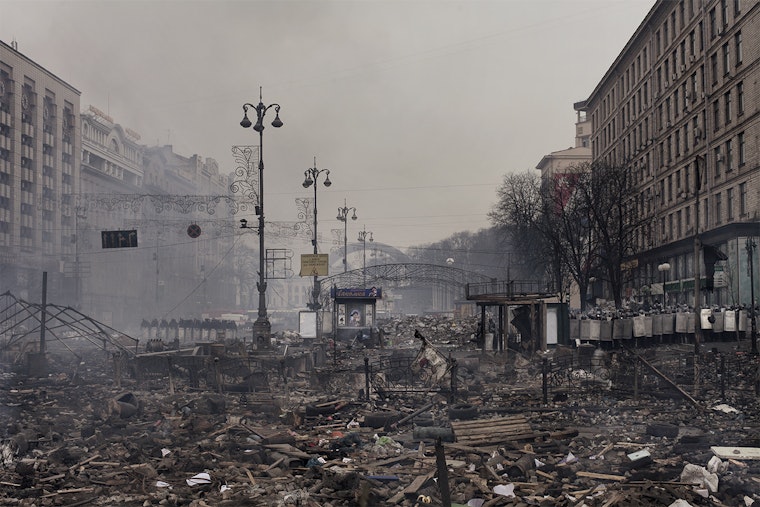In Hundreds of Photos and Videos, Maidan’s Atrocities Take Shape
By Roman Romanov

What has happened here?
That’s the question I believe we must answer, not only for historical perspective, and not only to punish those who broke the law. We must answer it to gain a deeper understanding of how our society functions in the face of injustice, and to set the tone for a fairer and more equitable future Ukraine.
Several days before the OSCE Ministerial Council in Kyiv, on the nights of November 29 and 30, 2013, authorities dispersed the Student Maidan, a peaceful protest in support of European integration. The official reason was the need to clear the square for installing a New Year’s tree.
The dispersal quickly turned aggressive, resulting in the arrests of 34 people, and, according to the Ministry of the Interior, 71 people requiring medical assistance, including three journalists.
Outraged by the violence, people took to the streets of Kyiv in a large-scale peaceful protest the next day. Over the next several weeks, their numbers grew, eventually reaching half a million, according to some estimates.
For next 10 weeks there were a number of new attempts to dissolve the protest: Parliament adopted a package of restrictive new laws, and hundreds of activists were arrested, kidnapped, and tortured. According to our investigation, the police closely collaborated with groups of civilians who attempted to provoke violence. At the height of the chaos on February 20, mass shootings killed more than 100 Ukrainians.
Most people in Ukraine don’t believe those deaths were accidental, or even a simple abuse of police power. They believe the violence was organized and ordered from the top levels of government, an orchestrated effort to crush the demonstrations through assault and illegal detentions.
To gain a clear picture of whether those suspicions are correct, the International Renaissance Foundation is working with national investigative bodies and the International Criminal Court (ICC). We’ve assembled an open report for the first anniversary of Maidan, in which we brought together 13 different groups and initiatives with a trove of factual information: photos, videos, witness statements—a documentation of human rights violations and crimes committed during the conflict, from which a clear legal assessment of what took place can be made.
There is much to learn here. The most important thing is that, according to our investigation, from November 2013 to February 2014, all of the actions of the authorities in Ukraine were aimed at escalating the conflict. Not at de-escalating it, and not at finding solutions to it. The flames of the fight were stoked by those in power. It was this that laid the groundwork for the violence that ultimately killed so many.
These crimes led to at least 114 deaths, including 94 Euromaidan activists, arbitrary imprisonment of hundreds of people, and physical injuries sustained by thousands of protesters. The fate of 27 missing protesters is still unknown. As well as death, injury, and unlawful arrest, multiple instances of kidnappings of protesters, torture, and ill treatment by law enforcement and affiliated criminal groups were documented.
We found that these crimes were systematic, well organized, and committed over a short period of time. A large body of photo and video evidence of violent attacks on peaceful protesters confirms that perpetrators were confident in their absolute impunity.
What made these events different from previous acts of official violence is the fact that they were captured in still shots and videos from thousands of cameras. This means that for every abuse of power there is evidence—so much of it that you can compare many images from different vantage points. It’s an unprecedented volume of information to be collected by civil society.
The events at Maidan also surfaced an active and capable volunteer movement, as thousands joined the efforts of groups like Euromaidan SOS, a self-organized association of civil society activists, lawyers, journalists, and other professionals. The work of groups like these has only added to our vital cache of primary documentation.
It’s this same sheer scope that makes Maidan a very challenging case for the ICC. The events that shook Ukraine last year were organized by a systemic chain of command, and the results were a period of sustained and disturbing violence that shocked the world. No one can predict the results of the ICC’s preliminary investigation, but we hope it will bring us a step closer to justice.
Roman Romanov is director of the Rule of Law Program at the International Renaissance Foundation.